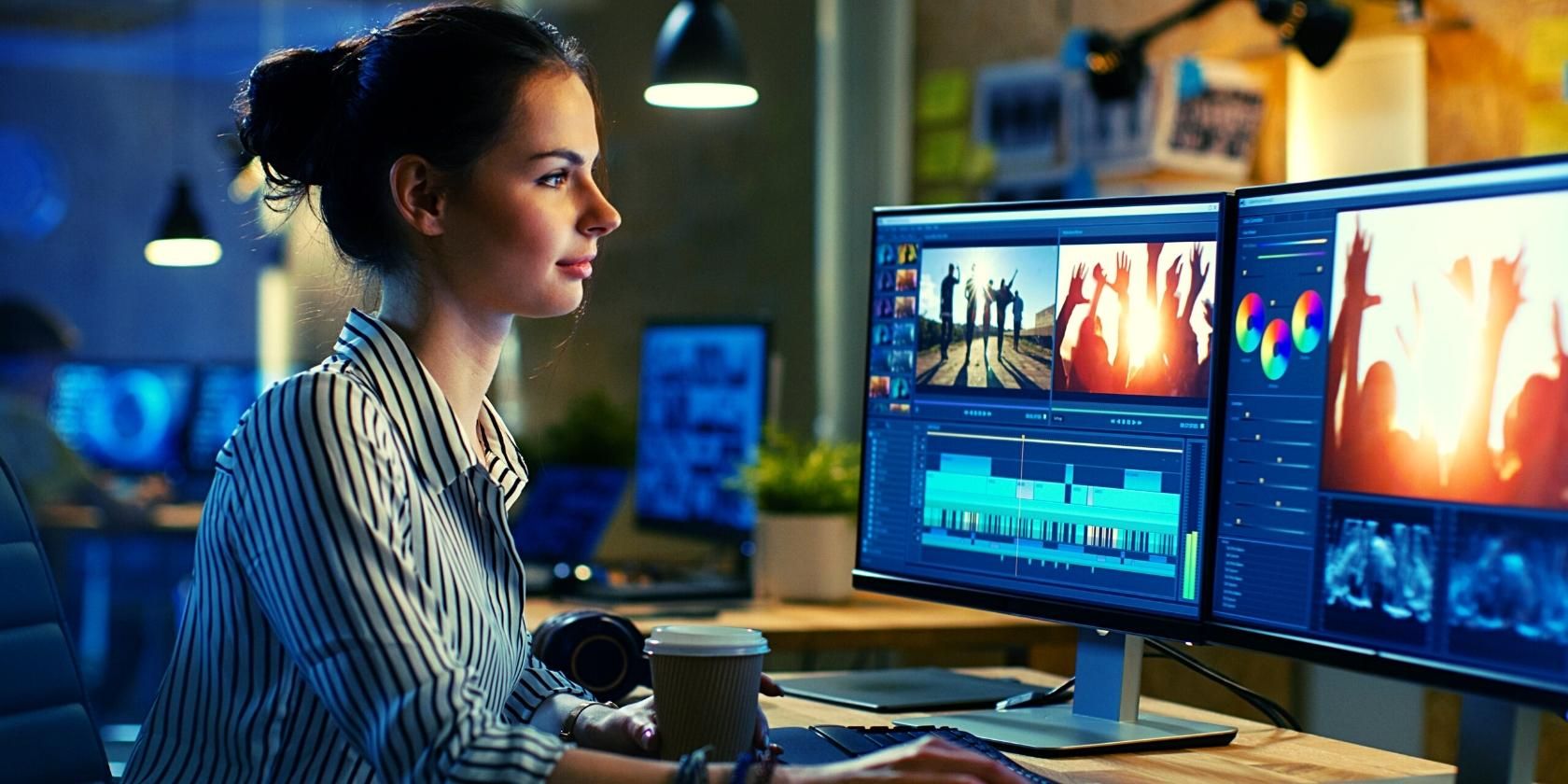DaVinci Resolve is a professional-level video editing software. The full-featured program combines video editing, audio production, color grading, motion graphics, and more in one tool.
The app has two versions: Free and Studio. While the Free version offers many features, the DaVinci Resolve Studio delivers a complete video suite, making it one of the most powerful editing software you can find.
But which one should you use? Let's look at DaVinci Resolve 17, both free and paid versions, and the tools included in each to help you make the right decision.
Color Grading and Correction
DaVinci Resolve is renowned for its unrivaled color grading capabilities, which you can find in both versions. Studio, however, takes this ability a notch higher.
The free version has a horde of advanced color correction tools. You can use color correction tools to adjust an image's hue, saturation, and brightness by picking colors from frames. This can be done using color wheels and curves. You can also find and correct spots and perform basic noise removal.
Resolve also has tools like Magic Mask and Color Warper. Color Warper enables you to alter the color and luminance simultaneously, while Magic Mask (only available in Studio) is a great way to isolate and track objects.
You can use Magic Mask to automatically isolate an entire person or specific features from the rest of the clip. To remove extra colors and correct misalignments, you may need to use DaVinci's 3D stereoscopic gradation, only available in Studio.
Studio also adds HDR scopes to provide detailed data for ST.2084 and HLG images. You can use it to create videos with richer contrast, brighter tones, and deeper shadows that are Dolby Vision and HDR10+ compliant.
Media and Delivery
The free version can only export up to 4K Ultra HD (3840×2160) and up to 60fps. It, however, lets you import, edit, and grade higher resolutions, but you can't export them. As such, you can't create DCI 4K and higher resolution videos.
On the other hand, Studio supports up to 120 fps at 32K resolution and offers advanced HDR delivery. This makes it an ideal choice if you don't want limitations when exporting projects.
The Studio version also supports formats and codecs such as H.264, H.265, and 10-bit. Because of this, it can work with footage from filmmaking cameras like the Panasonic GH5.
Sound and Visual Effects
FairlightFX is Resolve's professional audio mixing panel. While this option is included in the free version, it's the Studio version that has more sound effects and tools. Studio-only features include Auro-3D audio, support for Dolby Atmos audio, and B‑chain audio monitoring.
Both versions of Resolve allows you to download royalty-free stock audio from Blackmagic's website for use in your projects. You can then use Fairlight audio editor to work with up to 2,000 audio tracks at a time.
When it comes to visual effects, the Effects library has options like OpenFX, which contain ResolveFX. Some filters under OpenFX, like film grain, camera blur, lens flare, and lens blur, are not included in the free option.
Face refinement is also not available in the free version. This tool makes it faster to touch up the skin, relight a person's face, enhance and sharpen eyes, and remove eye bags.
Resolve Studio also has effects like Pencil Sketch, Analog Damage, Stylize, Chromatic Aberration, and Chromatic Adaptation.
Furthermore, paying customers also get access to motion blur and advanced noise reduction tools with both spatial and temporal noise filtering options. These tools help make images sharper, especially when working on high-resolution projects that need great attention.
Studio also includes a new film halation that adds glow effects or light reflections around high contrast edges, making images more cinematic. In addition, numerous third-party OpenFX plugins work with features only found in Studio.
GPU, Hardware Accelerated Encoding, and Neural Engine AI
Both free and paid versions use the GPU for processing, although the free version doesn't support multiple GPUs. Earlier versions of the free DaVinci Resolve didn't support GPU rendering and instead relied on the CPU for rendering.
Today, however, the free version for Mac and Windows support GPU acceleration. Even then, Studio users get much faster encodes and decodes. Studio supports hardware-accelerated encoding and decoding of formats like H.264 and H.265, dramatically improving the speed of editing and rendering.
Studio also includes Neural Engine, an AI-based program whose primary purpose is to lessen those time-consuming and repetitive tasks. The program adds several tools, including scene detection, object tracking, facial recognition software, auto-color matching, object removal, and footage upscaling.
Multi-User Collaboration
Both free and paid versions support multi-user collaboration, allowing you and your team members to work simultaneously on a project. This means professionals like audio engineers, colorists, picture editors can work on the same task in real-time, using their favorite tools.
It also has a built-in chat, allowing team members to share ideas without leaving the platform. However, other collaborative features are only available in Studio. For instance, only the paid version supports markers and comments sync between DaVinci Resolve and Dropbox.
Pricing
DaVinci Resolve runs on Windows 10 (1703 and later), macOS (10.14.6 Mojave and later), and Linux (CentOS 7.3 or later). You can download and use it for free.
Download: DaVinci Resolve (Free)
You can also purchase the Studio version from an authorized reseller, and it will come with a license card. A lifetime license costs $295 and comes with a free upgrade to future versions. This makes it one of the cheapest full-spec software packages you can buy.
DaVinci Resolve Free vs Studio: Should You Upgrade?
If the projects you're working on don't require advanced editing, then the free version will be an excellent option for you. The free version includes features like color grading, visual effects, and audio post-processing options and is suitable for budding filmmakers and videographers.
DaVinci Resolve Studio has many features and is ideal for professional filmmakers and projects requiring anything more than 4K UHD. Its greatest strength for many filmmakers is its color grading power and the ability to sort clips using AI tools quickly.
The Studio version is one of the best video editing tools you can get, but if you're still new to editing, the Free version should be more than enough for your needs.


